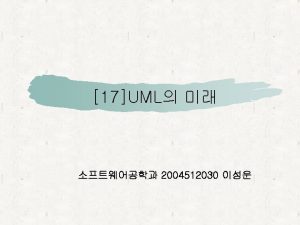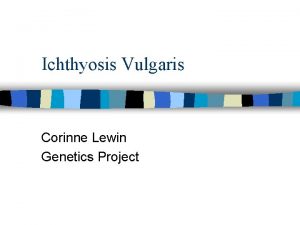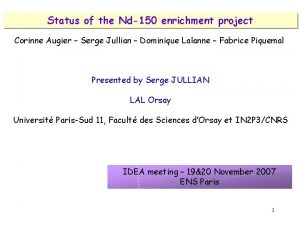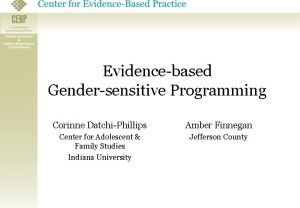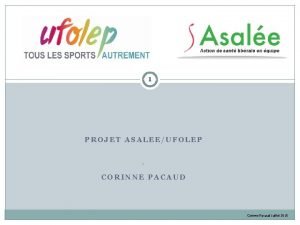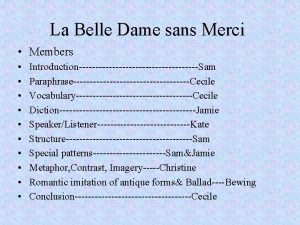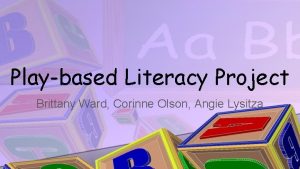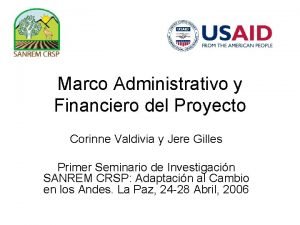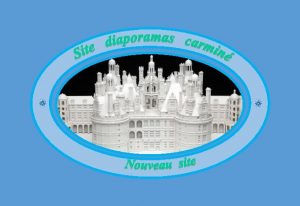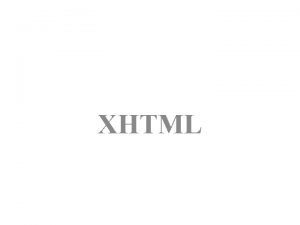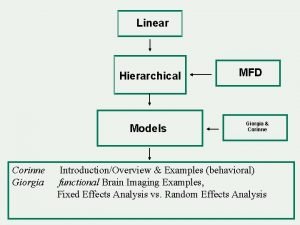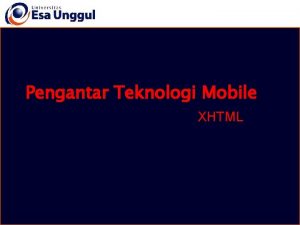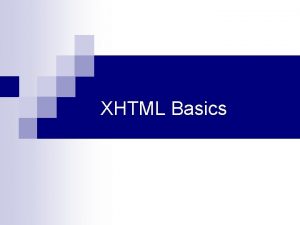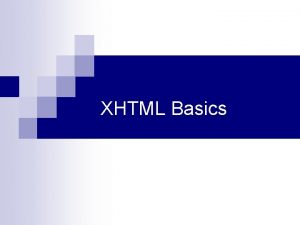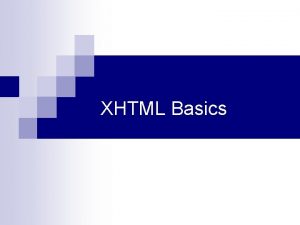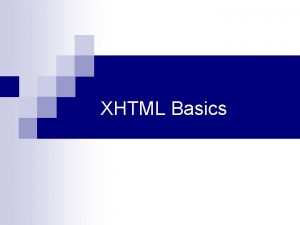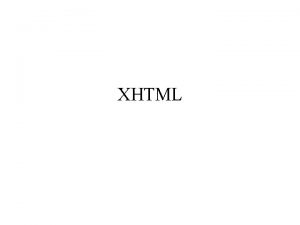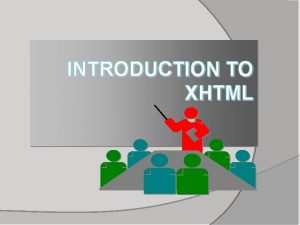XHTML UML Corinne Picataggi 2011 XHTML Definition XHTML













- Slides: 13

XHTML UML: – Corinne Picataggi 2011

XHTML - Definition XHTML: e. Xtensible Hyper. Text Markup Language Definition: An XML vocabulary that reformulates HTML as an XML vocabulary

XHTML - Application Description A language used to write web pages Not industry specific, applicable to any type of web design. XHTML is found on sites displaying static content, as well as in dynamic applications that are used by millions of users, like Facebook. An application of XML Document in XML types that extend HTML, reformulated Requires well-formed documents Strict, follows precedence of XML and requires that elements follow specific syntax. Designed to allow future integrations and

XHTML - History Created because HTML lacked functionality Version 1. 0 Recommended by World Wide Web Consortium (W 3 C) in 2000 Version 1. 0 is a reformulation of HTML 4. 01 in XML Version 1. 1 defines modularization of XHTML to further increase extensibility and integration Enhanced forms features, and database / workflow applications for the web Document types: strict, transitional, frameset

XHTML - Features The following five features helped initiate the creation of XHTML is more extensible that HTML, in that it is designed to accommodate future adaptations and growth. XHTML increases interoperability with other data formats by using XML flexibility and its inherent component architecture. My using XSLT, transformations can happen server-side and minimize change on the client-side. XML inherently has the robust capabilities of the XML language. XHTML has defined rules, improving the standard across developers; it requires all tags be closed, it uses case sensitive element and attribute names, and it prohibits arbitrary namespaces. The XHTML takes advantage of features available in XML like namespaces and faster parsing.

XHTML - Benefits Extensibility Non-finite element set, allows for additional elements or integration with other XML-based languages Portability Simplify webpage structure Adaptable for mobile devices Tiered structure for markup language Structure Logical layout, Closed, nested tags More predictable display in browsers Design content in separate style sheets

XHTML - Examples An application many Americans use daily: Facebook – an XHTML application

XHTML – Facebook Source

XHTML – Online Photo Album A simple, yet functional XHTML online photo album. Presented by Orangeline Interactive.

XHTML – Photo Album, Source

XHTML – Looking Ahead The W 3 C charter for the XHTML working group expired. Future versions of HTML to remain compatible with XML serialization Browsers continue to support XHTML applications still exist across the web

XHTML - Conclusions Although XHTML is being deprecated by the W 3 C working group, it is still in use in many applications on the web. Until HTML fully incorporates XML serialization, developers who make use of the benefits of XHTML, will continue to use the language because of its ease in building complex pages that include forms, lists, tables, images, dynamic content, and more.

Reference List Carey, Patrick. (2007). New Perspective on XML 2 nd Edition. Boston, MA: Course Technology Facebook. (2011). Facebook. Retrieved from http: //www. facebook. com/home. php#!/corinne. picataggi Kovacs, James Microsoft. XHTML and CSS Improvements. Retrieved from http: //msdn. microsoft. com/enus/magazine/dd 894045. aspx Lajuett, Patrick. Benefits of Web Design using XHTML with CSS. Retrieved from http: //lajuett. com/xhtml-web-design. html Orangeline Interactive. Web Album Generator. Retrieved from http: //www. ornj. net/webalbum/sample/ W 3 C (2009/07/02). (FAQ) about the future of XHTML. Retrieved from http: //www. w 3. org/2009/06/xhtml-faq. html
